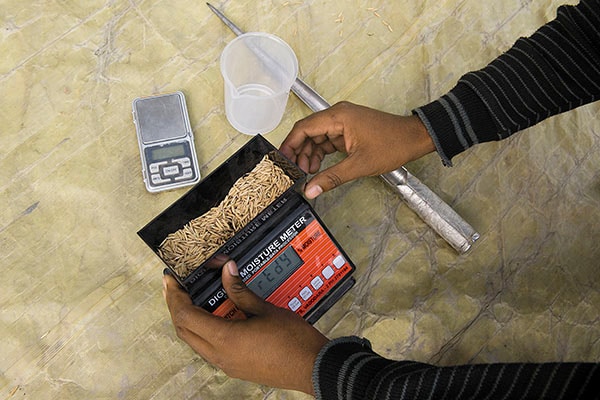
How Sohan Lal is solving the problem of agri-commodity wastage
By almost eliminating wastage, Sohan Lal Commodity Management has cracked the code of agri-commodity storage. Its model can help India modernise its post-harvest management practices
An hour north of Delhi along National Highway 1, a warehouse leased by Sohan Lal Commodity Management is filled to capacity with sacks of grains and pulses. The bags, neatly marked and assayed, are stacked high in the 5,000 square feet storage facility at Sonepat. Here, quality checks are conducted frequently, the grains are aired and, most importantly, steps are taken to ensure that no moisture seeps into the bags.
Through the course of routine quality checks, bags are punctured and samples taken. Reports made on handheld tablets are immediately sent to Sohan Lal’s head office in Delhi. The manager tells us that random audit checks keep the staff on their toes and the possibility of grains missing or getting spoilt is nil.
It is this certainty of quality, and efficiency of management that has catapulted Sohan Lal to the top league of commodity management in India. Even without owning warehouses (the company leases its storage facilities), it is excelling at agri-logistics. The Sonepat warehouse, for instance, is miles ahead in terms of management compared to similar facilities run by the state-owned Central Warehousing Corporation or the Food Corporation of India, where reports of grains being eaten by rats or rotting in the open are common.
Over the last three years, the ministry of agriculture reported an average grain production of 242 million tonnes in India. But more than 10 percent of this was lost due to bad storage practices. “If agriculture in India has to improve, this 10 percent wastage has to be reduced dramatically,” says Nikhil Khattau, managing director at private equity (PE) firm Mayfield Advisors Pvt Ltd, which invested an undisclosed amount in Sohan Lal in 2011.
The government traced the problem of post-harvest grain loss to inadequate storage facilities. In 2013, the Union Budget tried to address the issue by launching the Gramin Bhandaran Yojana, where the central government pledged to provide 25 percent of the cost of building or renovating rural godowns.
That, according to Sandeep Sabharwal, 44, chief executive of Sohan Lal Commodity Management, was a wrong approach. Since 2004, he’d been pursuing a different track and was convinced that the problem had more to do with improper management than inadequate storage facilities. And, so far, his bet has resulted in the creation of a Rs 1,800-crore company that has the potential to grow manifold.








